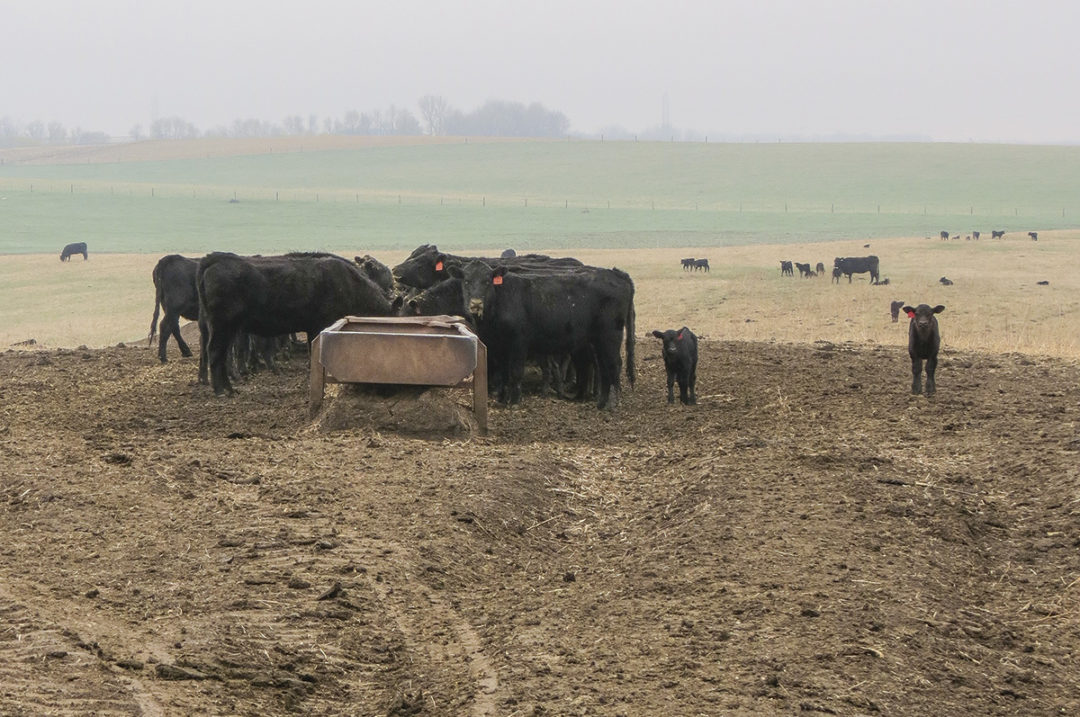It is mid-summer, and you are starting to consider your weaning plan. Dates are on the calendar for vaccinations, and the subsequent booster and trucks are ordered to arrive on a certain day. The crew has the appropriate dates on the calendar circled so they can have facilities prepped and ready to go. Your plan looks good and the attempt to maximize the ranch income is promising. It’s imperative that weaning goes perfectly because a calf in today’s economic cycle is worth at least $1,500. However, one very important thing can easily be forgotten: the calf’s nutritional plan from now until weaning. Will the cattle be ready when weaning day arrives?
Forage quality
It is very common knowledge that from mid-summer on, forage quality generally declines. Fiber content increases, which leads to less energy for the animal, and protein content also diminishes. This is also coupled with trace mineral values that are below the animal’s requirements. These factors combined should make you think about the nutritional package needed for your cattle to make sure they have the best day possible at weaning. Weaning day is probably the most stressful day that calf will ever go through. Having the animal set up nutritionally for that stressful day is a very important part of weaning success.
Pre-weaning nutrition considerations
Generally, the most practical pre-weaning nutritional package will be a free-choice mineral the cow-calf pair will consume. However, it could be a creep supplement of some type for the calf. It could also be a fortified cake/cube for both the cow and calf. Whatever is most practical for the ranch should be determined by these considerations: palatability, trace mineral bioavailability and feed stability.
Palatability
The best nutritional package in the world doesn’t do any good if the cattle don’t consume it. Making sure the proper macro- and microingredients are used to allow the cattle to consume it appropriately is critical. Trace mineral sources are a critical part of this ingredient decision-making process. Trace mineral source can affect palatability and consumption of the nutritional package. Several studies from the University of Florida have demonstrated that cattle prefer supplements containing hydroxychloride forms of trace minerals over supplements that use sulfate or organic forms of copper, zinc and manganese (Figure 1).

Trace mineral bioavailability
The next consideration for the package should be trace mineral bioavailability. Similar to palatability, bioavailability will have a big impact on the success of the pre-weaning nutritional package. One of the goals of trace mineral supplementation is to ensure minerals are available to the animal during times of need; weaning day is definitely a time of need. Choosing a mineral source that has high bioavailability will allow the animal to consume it and store it in the targeted tissues (liver and others) and have it ready to use when needed. Your pickup won’t run at all if the fuel tank is empty; the calf’s growth and immune system won’t run if its trace mineral tank is low. Hydroxychloride trace minerals are known to have better bioavailability than sulfate forms of copper and zinc (Figure 2).

A key reason for a high bioavailable trace mineral, specifically zinc, is that it plays an integral role in supporting gut health and reducing the negative effects of dysfunction on the gastrointestinal tract. Zinc plays a role in regeneration of damaged epithelium, improved gut barrier function, improved villus morphology and an altered inflammatory response. During stress events, cattle generally eat less of the supplied feed or supplements. Therefore, stressed cattle are more than likely getting an inadequate supply of zinc. Because of this lowered zinc intake during times of stress, using an improved zinc source becomes increasingly important. Cattle need to get the most out of this inadequate supply of zinc caused by reduced consumption. Improved sources of zinc help maintain intestinal barrier function and preserve the immune system. These improved zinc sources include zinc hydroxychloride and organic zinc sources (proteinate, chelate, amino acid complex, etc.), which were developed to have stronger bonds that hold the zinc tighter to its ligand. This allows the zinc to pass through the rumen for absorption in the intestines, where it can then be used for necessary biological purposes by the animal. These improved zinc sources are more expensive than sulfates; however, they deliver better, more predictable nutrition to the animal, which is critical with the near-constant stress cattle encounter. Lost production directly translates to lost dollars.
Feed stability
Another key piece of the successful pre-weaning nutritional package is proper vitamin formulation. Fat-soluble vitamins A and E are also critical to animal health and an optimally functioning immune system. However, these vitamins may be susceptible to oxidative free metals released by ordinary sulfate trace minerals. Vitamins are sensitive to their environment because they are comprised of unsaturated carbon atoms and double bonds vulnerable to oxidation. It is very common for a supplement/mineral package to be purchased in larger quantities to get the best discounts and then stored on the ranch for multiple months of use.
Research conducted using ruminant premix processing protocols found that vitamin stability is often compromised when trace minerals were included in the premix. Furthermore, when sulfate or free metals were included in the premix, stability of vitamins A, E and K were decreased to a greater extent compared to chelated (organic) or oxide trace minerals, indicating that trace mineral source potentially impacted vitamin availability for the animal. Research with basic copper chloride (improved trace mineral) has shown 10% to 70% more vitamin E retention in complete poultry diets containing high levels of copper versus copper sulfate after 10 to 40 days of storage (Figure 3), which later corresponded to higher liver and plasma vitamin E levels when these diets were fed to chicks. Using a highly bioavailable improved trace mineral source appears to protect vitamins in feed, ensuring the nutrients formulated retain their optimum quantity and quality and can actually be used by the animal.

Your ranch pre-weaning plan is in place. Now, make sure your pre-weaning nutritional plan is the best it can be. Consider all the stresses your cattle will go through on weaning day and set them up for success. Use a pre-weaning nutritional package with highly bioavailable improved mineral sources to support cattle performance and health and maintain their high value and reputation.









